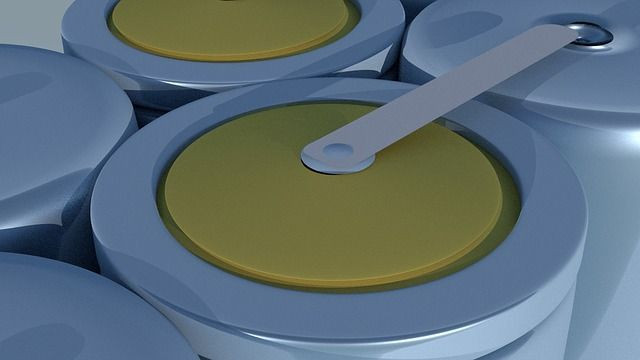Investing In The Power Grid’s Sustainable Future With Lithium-Ion Batteries
Innovations in solar, wind and other renewable energy resources have become more prominent within our electrical generation system, but to unlock their full potential the power grid needs bigger, more reliable battery solutions.
Heavier demands are placed on these batteries compared to those used for electric vehicles (EVs) and mobile devices due to the daily, constant nature of electrical energy charge/discharge cycles, storage, transmission, and distribution. These stringent requirements coupled with the current limitations of available industrial-grade battery solutions have made utilities and investors alike hesitant to invest in large-scale battery storage projects, which complement renewable energy generation and provide a reliable alternative to traditional fossil fuels.
For this reason, more time, research, and capital need to be funneled into the development of Generation 2. 0 batteries in order to make the sustainable future of the power grid a reality. There is a starting point, lithium-ion batteries have demonstrated that they are reliable and capable in the consumer realm and now, investors are looking to transfer this success to batteries developed for the power grid and industrial use.
Gen 2.0 batteries will utilize material innovations, including silicon anodes, to increase charge/discharge cycles and energy density to meet industrial demands. New silicon precursors like cyclohexasilane (CHS) have shown that they can improve silicon anodes and drive lithium-ion battery performance by creating new chemistries and structures.
These innovations make Gen 2.0 batteries, capable of delivering the performance needed for power grid, a reality. While these technologies exist, the question remains as to what will push us to the tipping point of mass adoption and investment for the purpose of renewable energy integration?
The push towards battery investment and integration
Batteries aside, one of the biggest drivers for industrial battery storage and sustainability, in general, is public sentiment. At the institutional level, major universities and corporations are slowly divesting their stake in fossil fuels, while at the retail level more investors are drawn to clean technology companies and together, these present a massive upside. However, the massive upside is only achievable should utilities and electrical generation companies commercialize their green technology at an effective price point.

The battery technologies available today have made significant strides towards being able to accommodate renewable energy into the grid, but they still require new advancements to extend the cycle life and capacity demands that the grid sets forth. The future hinges on sustainability and environmental conservation so manufacturers need to identify new ways to enhance industrial-grade battery capabilities to make clean energy a more reliable and cost-effective option.
Building a bigger and better battery with silicon
Manufacturers must develop Gen 2.0 batteries that are built for longevity and designed to last under the constant charge and discharge cycles necessary when connected to renewable energy generation plants. To achieve this, researchers are exploring modifications to the battery chemistry of the battery anode.
New material advancements to a lithium-ion battery’s anode can drastically improve capacity as well as improve charging cycle life; two of the biggest concerns and barriers to adoption for electric utilities. Most lithium-ion battery anodes generally use graphite, which works for our mobile devices but limits the capacity needed for the grid.
Replacing the graphite anode with silicon, possibly silicon quantum dots, silicon nanowires, or printed silicon structures, can unlock potential for the battery’s capacity by allowing up to 400% more lithium-ions to be stored in the anode. The more silicon a manufacturer can pack into the anode, the better suited it will be for the power grid. When structured properly, both increase battery capacity and reduces the amount of its degradation over time.
However, these highly desirable traits are not easy to achieve. In today’s Gen 1.0 lithium batteries, swelling, cracking and accelerated degradation become an issue as more lithium-ions are stored in the anode during charges. Manufacturers are exploring new ways to incorporate silicon without these negative results of lithiation. One such way is with a material known as cyclohexasilane, which is a form of silicon that is a liquid instead of a gas at room temperature.
Cyclohexasilane packs six times more silicon atoms per molecule compared to the standard monosilane used today and this has some advantage. Because it exists in a liquid state at room temperature, it can be used to create low cost, highly efficient silicon-based nanowires and quantum dots that are also scalable. Better control of the nanowire or quantum dot size and morphology can reduce swelling and degradation.
There are also advantages in using cyclohexasilane to create anode structures with porosities, extra space for the extra lithium-ions, which is superior to other silicon anode methods. This in turn manages the swelling during lithiation and the batteries are able to withstand more charge/discharge cycles and ultimately have a longer cycle life in the field – meaning fewer installation and maintenance costs for utilities and greater return on investment for investors.
Silicon material advancements will address the growing need for batteries to provide the power performance and reliability for the mission-critical grid. New chemistries, new battery structures, and new materials like cyclohexasilane will be needed to deliver this level of performance. And with utilities and battery manufacturers committed to and invested in the pursuit of energy storage technologies that create the tipping point, the institutional and capital markets will follow, bringing the day of clean energy generation and deployment that much closer to reality.
(Michael Kraft is the CEO of The Coretec Group)
© Copyright IBTimes 2024. All rights reserved.





















